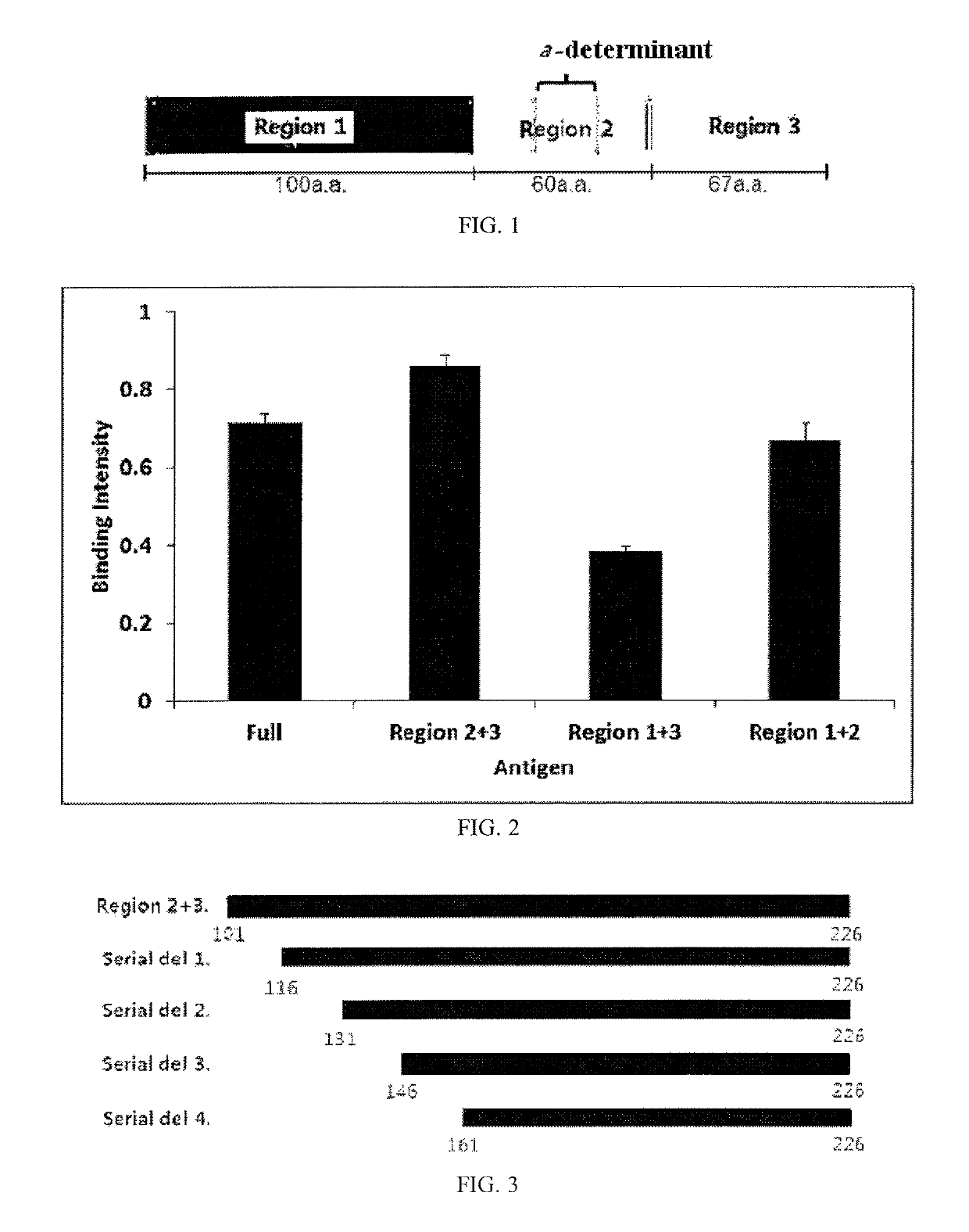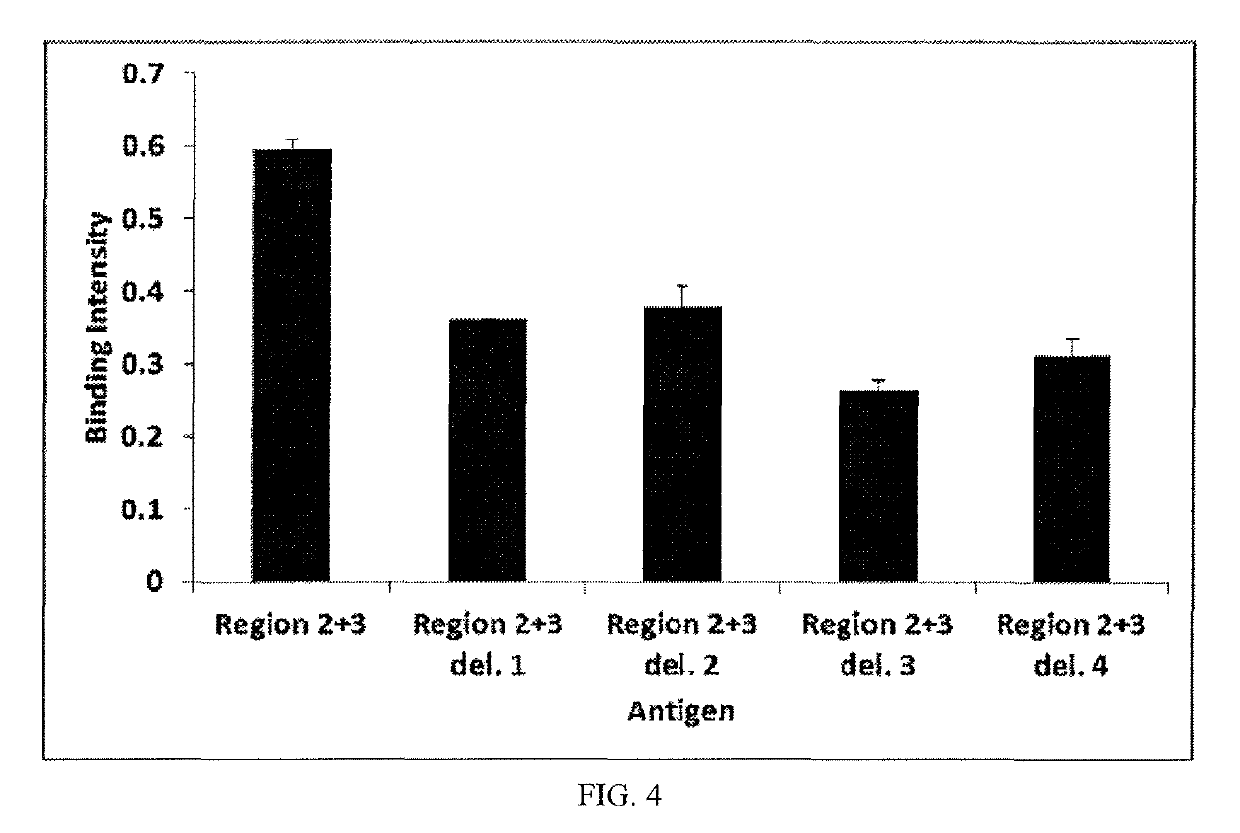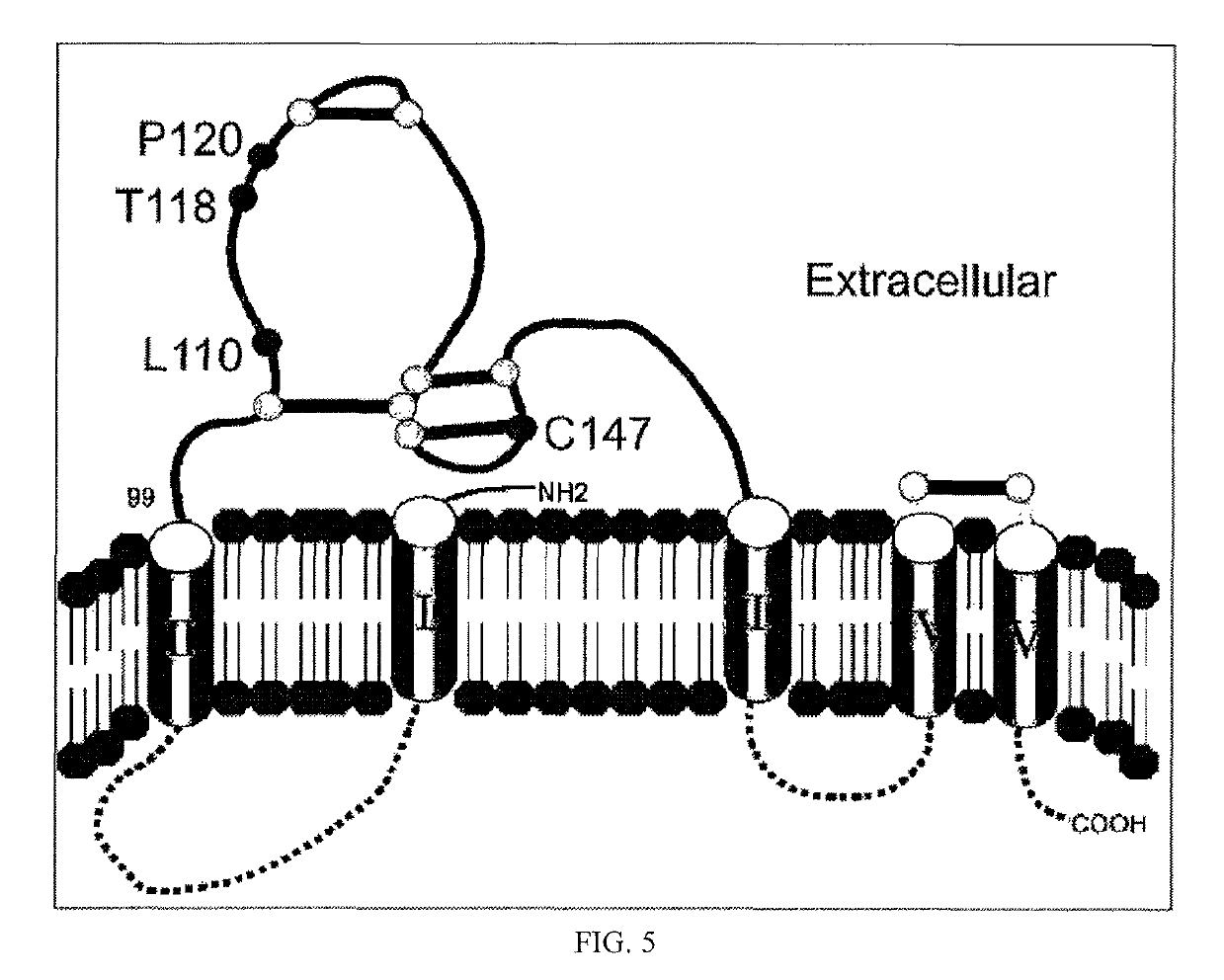Epitope of hepatitis B virus surface antigen and binding molecule specifically binding to same for neutralizing hepatitis B virus
a technology surface antigen, which is applied in the field of hepatitis b virus surface antigen and a specific binding molecule of hepatitis b virus to neutralize the virus, can solve the problems of aggravated hepatitis, deteriorating drug efficacy, and increasing social expenses due to liver disease, so as to reduce the possibility of undergoing a reduction in efficacy and be useful in the prevention and/or treatmen
- Summary
- Abstract
- Description
- Claims
- Application Information
AI Technical Summary
Benefits of technology
Problems solved by technology
Method used
Image
Examples
example 1
ation of Binding Site of Inventive Antibody Using Deletion Mutant Antigen
[0080]In order to verify the binding site of an inventive antibody to HBsAg, wild-type HBsAg and various deletion mutants of HBsAg were prepared and the binding ability thereof was measured through enzyme-linked immunosorbent assay (ELISA) using phages.
[0081]Here, testing was performed in two steps. Particularly, HBsAg (226 a.a) was divided into three regions, namely amino acid sequences 1˜100, 101˜160, and 161˜226, and expression vectors of mutants in which respective regions were deleted and of wild types were prepared (FIG. 1) and each protein was expressed on the phage surface and then the binding intensity thereof to the inventive antibody was measured.
example 1-1
of Expression Vectors of Wild-Type HBsAg and Three Kinds of Mutant HBsAg
[0082]In order to express, on the phage surface, wild-type HBsAg and its three divided portions, namely deletion mutant proteins, cloning was performed using a phage expression vector. The detailed testing method was as follows. To clone wild-type HBsAg and mutants having deleted sites, gene amplification was performed therefor through polymerase chain reaction (PCR) using, as a template, an HBV vector including an HBsAg gene base sequence of HBV genotype C (Department of Pharmacology, Konkuk University School of Medicine), followed by treatment with a restriction enzyme Sfi I and then insertion into the phage expression vector treated with the same restriction enzyme. The manufactured plasmid was extracted using a QIAprep Spin Miniprep Kit (QIAGEN, Germany, Cat #27106), and the base sequence of the antibody was ultimately identified through base sequence analysis using the extracted DNA. The names of the comple...
example 1-2
of Binding Intensity of Inventive Antibody to Wild-Type HBsAg and Three Kinds of Mutant HBsAg
[0085]To perform the binding test to all or some of the cloned HBsAg, each vector was inserted into expression E. coli (ER2738, Lucigen, USA, Cat #60522-2) through electroporation, and antibiotic (ampicillin)-resistant E. coli selectively began to grow from the next day. After growth for about 10 hr, E. coli was infected with the bacteriophage and another kind of antibiotic (kanamycin) was used to selectively grow the infected E. coli. To extract the bacteriophage on the next day, E. coli was separated using a centrifuge, and the supernatant was treated with polyethylene glycol (PEG) and allowed to stand in an ice bath for 30 min, after which the bacteriophage was separated again using a centrifuge. The separated bacteriophage was lysed, and the supernatant was filtered, thereby extracting a pure bacteriophage having all or some of HBsAg on the surface thereof.
[0086]In order to quantitativel...
PUM
| Property | Measurement | Unit |
|---|---|---|
| volume | aaaaa | aaaaa |
| concentrations | aaaaa | aaaaa |
| concentrations | aaaaa | aaaaa |
Abstract
Description
Claims
Application Information
 Login to View More
Login to View More - R&D
- Intellectual Property
- Life Sciences
- Materials
- Tech Scout
- Unparalleled Data Quality
- Higher Quality Content
- 60% Fewer Hallucinations
Browse by: Latest US Patents, China's latest patents, Technical Efficacy Thesaurus, Application Domain, Technology Topic, Popular Technical Reports.
© 2025 PatSnap. All rights reserved.Legal|Privacy policy|Modern Slavery Act Transparency Statement|Sitemap|About US| Contact US: help@patsnap.com



